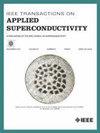Analytical Estimation of Quench Protection Limits in Insulated, Non-Insulated, and Metal-Insulated ReBCO Accelerator Dipoles and Quadrupoles
IF 1.7
3区 物理与天体物理
Q3 ENGINEERING, ELECTRICAL & ELECTRONIC
引用次数: 0
Abstract
Future particle accelerators require high-field dipole and quadrupole magnets to guide the particles inside the collider ring. Magnets based on High-Temperature Superconductors (HTS) allow operation with higher magnetic field and higher operation temperature compared with the Low-Temperature Superconductor (LTS) based options. One of the issues presently limiting the HTS technology seems to be their protection in case of an unwanted resistive transition, i.e., a quench. New magnet technologies based on non-insulated or partially insulated (metal-insulated) winding technologies ease the problem compared with traditionally insulated magnets. In these magnets, the current can by-bass the quenched segment and the peak temperature remains lower. However, in high current density and high energy density operation, also the insulation-free options will have limitations, and the quench temperatures should be analyzed. In this contribution we present a method for analytical estimation of the protection limits in insulated, non-insulated and metal-insulated magnets. The equations can be used in early stages of magnet design to assess the feasibility and performance requirements of the eventual protection systems. The work stems from the International Muon Collider Collaboration and the results shown here review the protection limits in the dipoles and quadrupoles considered in its collider ring design. We discuss how parameters such as the coil size, metal insulation thickness and the amount of stabilizer copper in the tape impact the protectability of the magnet. This analysis considers only an adiabatic estimation of the peak temperature. Other potentially critical aspects such as voltages and mechanical stresses must be considered with more detailed models as the magnet designs mature.求助全文
约1分钟内获得全文
求助全文
来源期刊

IEEE Transactions on Applied Superconductivity
工程技术-工程:电子与电气
CiteScore
3.50
自引率
33.30%
发文量
650
审稿时长
2.3 months
期刊介绍:
IEEE Transactions on Applied Superconductivity (TAS) contains articles on the applications of superconductivity and other relevant technology. Electronic applications include analog and digital circuits employing thin films and active devices such as Josephson junctions. Large scale applications include magnets for power applications such as motors and generators, for magnetic resonance, for accelerators, and cable applications such as power transmission.
 求助内容:
求助内容: 应助结果提醒方式:
应助结果提醒方式:


